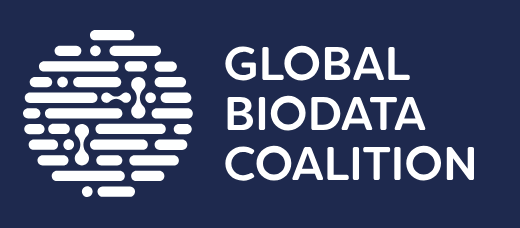CATH Superfamily 1.10.10.10
Winged helix-like DNA-binding domain superfamily/Winged helix DNA-binding domain
The name of this superfamily has been modified since the most recent official CATH+ release (v4_4_0). At the point of the last release, this superfamily was named:
"Winged helix-like DNA-binding domain superfamily/Winged helix DNA-binding domain
".
FunFam 171: DEP domain-containing protein 5 isoform X2
Please note: GO annotations are assigned to the full protein sequence rather than individual protein domains. Since a given protein can contain multiple domains, it is possible that some of the annotations below come from additional domains that occur in the same protein, but have been classified elsewhere in CATH.
There are 2 GO terms relating to "molecular function"
The search results have been sorted with the annotations that are found most frequently at the top of the
list. The results can be filtered by typing text into the search box at the top of the table.
| GO Term | Annotations | Evidence |
|---|---|---|
|
Protein-containing complex binding GO:0044877
Interacting selectively and non-covalently with a macromolecular complex.
|
1 | O75140 (/IDA) |
|
Protein-containing complex binding GO:0044877
Interacting selectively and non-covalently with a macromolecular complex.
|
1 | P61460 (/ISO) |
There are 7 GO terms relating to "biological process"
The search results have been sorted with the annotations that are found most frequently at the top of the
list. The results can be filtered by typing text into the search box at the top of the table.
| GO Term | Annotations | Evidence |
|---|---|---|
|
Negative regulation of TOR signaling GO:0032007
Any process that stops, prevents, or reduces the frequency, rate or extent of TOR signaling.
|
1 | O75140 (/IMP) |
|
Negative regulation of TOR signaling GO:0032007
Any process that stops, prevents, or reduces the frequency, rate or extent of TOR signaling.
|
1 | P61460 (/ISO) |
|
Cellular response to amino acid starvation GO:0034198
Any process that results in a change in state or activity of a cell (in terms of movement, secretion, enzyme production, gene expression, etc.) as a result of deprivation of amino acids.
|
1 | O75140 (/IMP) |
|
Cellular response to amino acid starvation GO:0034198
Any process that results in a change in state or activity of a cell (in terms of movement, secretion, enzyme production, gene expression, etc.) as a result of deprivation of amino acids.
|
1 | P61460 (/ISO) |
|
Negative regulation of TORC1 signaling GO:1904262
Any process that stops, prevents or reduces the frequency, rate or extent of TORC1 signaling.
|
1 | O75140 (/IMP) |
|
Negative regulation of TORC1 signaling GO:1904262
Any process that stops, prevents or reduces the frequency, rate or extent of TORC1 signaling.
|
1 | P61460 (/ISO) |
|
Negative regulation of TORC1 signaling GO:1904262
Any process that stops, prevents or reduces the frequency, rate or extent of TORC1 signaling.
|
1 | P61460 (/ISS) |
There are 12 GO terms relating to "cellular component"
The search results have been sorted with the annotations that are found most frequently at the top of the
list. The results can be filtered by typing text into the search box at the top of the table.
| GO Term | Annotations | Evidence |
|---|---|---|
|
Lysosome GO:0005764
A small lytic vacuole that has cell cycle-independent morphology and is found in most animal cells and that contains a variety of hydrolases, most of which have their maximal activities in the pH range 5-6. The contained enzymes display latency if properly isolated. About 40 different lysosomal hydrolases are known and lysosomes have a great variety of morphologies and functions.
|
1 | O75140 (/IDA) |
|
Lysosome GO:0005764
A small lytic vacuole that has cell cycle-independent morphology and is found in most animal cells and that contains a variety of hydrolases, most of which have their maximal activities in the pH range 5-6. The contained enzymes display latency if properly isolated. About 40 different lysosomal hydrolases are known and lysosomes have a great variety of morphologies and functions.
|
1 | P61460 (/ISO) |
|
Lysosomal membrane GO:0005765
The lipid bilayer surrounding the lysosome and separating its contents from the cell cytoplasm.
|
1 | O75140 (/HDA) |
|
Lysosomal membrane GO:0005765
The lipid bilayer surrounding the lysosome and separating its contents from the cell cytoplasm.
|
1 | O75140 (/IDA) |
|
Lysosomal membrane GO:0005765
The lipid bilayer surrounding the lysosome and separating its contents from the cell cytoplasm.
|
1 | P61460 (/ISO) |
|
Lysosomal membrane GO:0005765
The lipid bilayer surrounding the lysosome and separating its contents from the cell cytoplasm.
|
1 | P61460 (/ISS) |
|
Cytosol GO:0005829
The part of the cytoplasm that does not contain organelles but which does contain other particulate matter, such as protein complexes.
|
1 | P61460 (/IDA) |
|
Cytosol GO:0005829
The part of the cytoplasm that does not contain organelles but which does contain other particulate matter, such as protein complexes.
|
1 | O75140 (/ISS) |
|
Perinuclear region of cytoplasm GO:0048471
Cytoplasm situated near, or occurring around, the nucleus.
|
1 | P61460 (/IDA) |
|
Perinuclear region of cytoplasm GO:0048471
Cytoplasm situated near, or occurring around, the nucleus.
|
1 | O75140 (/ISS) |
|
GATOR1 complex GO:1990130
A protein complex involved in regulation of non-nitrogen-starvation (NNS) autophagic process. In S. cerevisiae this complex contains Iml1p, Npr2p and Npr3p proteins. In humans the GATOR1 complex consists of DEPDC5, Nprl2, Nprl3.
|
1 | O75140 (/IDA) |
|
GATOR1 complex GO:1990130
A protein complex involved in regulation of non-nitrogen-starvation (NNS) autophagic process. In S. cerevisiae this complex contains Iml1p, Npr2p and Npr3p proteins. In humans the GATOR1 complex consists of DEPDC5, Nprl2, Nprl3.
|
1 | P61460 (/ISO) |
